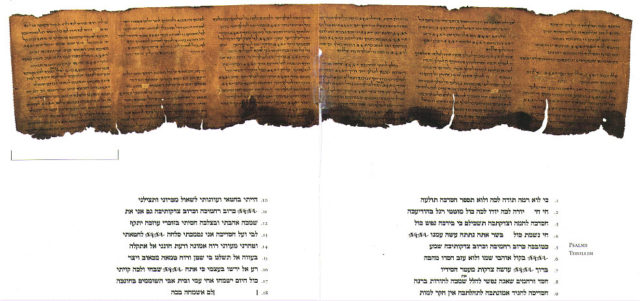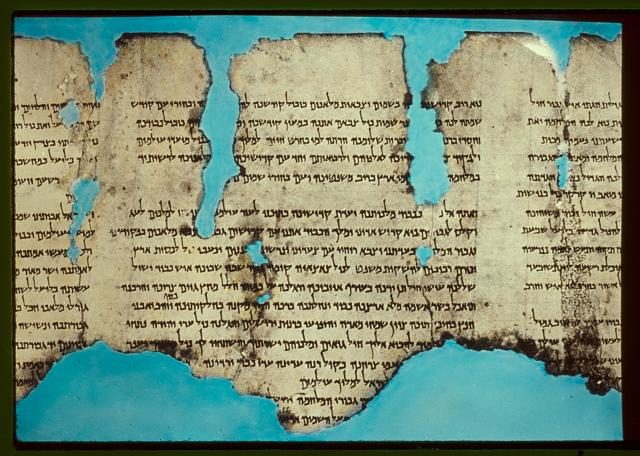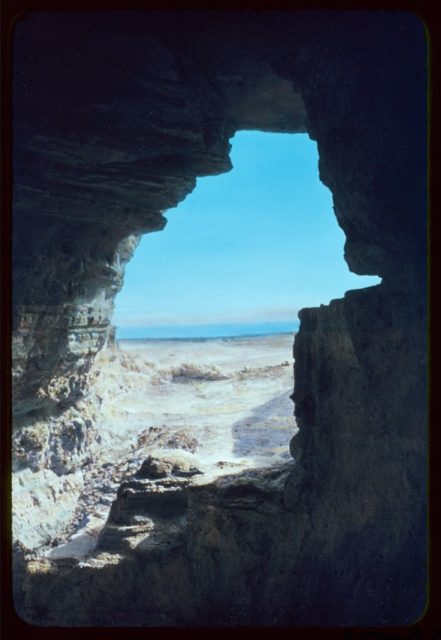New fragments of the Dead Sea Scrolls might have been hidden in the Cave of Skulls. An urgent excavation to salvage the remains from unscrupulous looters was undertaken by the Jewish University in June 2016.
At this stage the researchers are unable to determine the linguistic evidence of the scrolls; it could either be ancient Hebrew, Aramaic, or possibly another language. This uncertainty is due to the undecipherable words written on the scrolls, which need further analysis by researchers.

Working deep in the Judean desert, Israeli archaeologists spent weeks tirelessly looking for the scrolls. The scrolls found in the Cave of Skulls need further analysis to determine the language they were written in, as at this point no one is certain. The remote caves near the Dead Sea had first been discovered in 1947. The caves are remote and a naturally-occurring complex atop the northern bank of Tze’elim Stream.
As the story goes, a bored Bedouin shepherd had tossed a stone into a cave. The stone caused a vase to break, and upon investigation, the shepherd found the treasure trove of the 20th century. The area is well known for its ancient treasure and has been looted countless times. This has made it all the more important for investigators whose need to recover the artifacts is a race against time. The looters were trading ancient historical remnants on the black market. The artifacts are of massive significance, some findings date from CE, the Roman Empire, and possibly further back. It’s not only archaeologists that are digging up the past, and they are fighting against time.
The cave’s name was chosen due to another discovery at the site in the pitiless mountain range. In 1960, archaeologists found several craniums buried within remote caves of the Judean Desert. The Cave of Skulls was named by Prof. Yohanan Aharoni. Along with this cave, there are several other caves in the Qumran region, making up a collection of some 34 such caves. In another, archaeologists had found well-preserved, 30-inch reed arrows and iron arrowhead tips. Due to the arid condition of the surrounding area, which is about 1.2 miles from the Dead Sea, the items are completely intact.

The organic material was well preserved for thousands of years. For this precise reason, it’s an imperative to researchers to preserve and excavate the area before tomb raiders arrive and destroy the remains. It’s been well documented how some of the caves have been looted and the walls destroyed, making the already difficult task more challenging for researchers.
The significance of the area and the artifacts are apparent. Some artifacts date from the Neolithic Period and others are from the Copper Age. There is also significant evidence that the cave complex served as a temporary fortification for rebels in the Bar Kochba Revolt. The Dead Sea scrolls are a treasure, as fragments of words written on pieces of papyrus reed and skin parchment are well preserved and could provide the important information on the history of the people in the region.
What scientists like Dr. Uri Davidovich hope to accomplish is to connect the recent findings with those that have already been looted. Dr. Davidovich says that those documents have no known provenance and hopes to resolve that mystery. He is part of the team of researchers at the site from the Hebrew University of Jerusalem.
The latest expedition to the caves was a joint effort. The team had discovered two papyri scrolls and four lice combs among the ruins. The group was led by Dr. Uri and Roi Porat from the Hebrew University. The team is also made up of members of Israel’s Antiquities Authority and other archaeologists.

The two papyri fragments are measured about two by two centimeters. There was writing on several fragments, although the writing is without discernible letters. The excavation, made during a three-week operation during May and June, is the largest of its kind in 60 years.
The effort is worth it, as excavators worked tirelessly and were rewarded with extraordinary finds. Although looters may not have paid too much mind to items like fragments of leather, ropes, and textiles, to scientists, these items provide insight into the people who inhabited the area on and off for thousands of years. More items were uncovered and that shows that the caves were used as the shelter, with evidence that there might have been women and children as occupants. Other discovered items included wooden objects and bone tools. It bears mentioning that the earlier scrolls had clear writing, while others are still obscure.
The researchers were still able to find one of the human civilizations biggest pests – lice. There were pieces of wooden lice combs dated to the time of the Bar Kochba revolt that saw scores of Jews persecuted and killed. The Roman Empire was ruthless in this work, and this leads investigators to believe the caves provided refuge for those escaping the tyranny. In the cave, there were dozens of pottery shards, stone vessels, and flint items. There were other such items that need to be X-rayed to disclose their contents, such as bead clusters that are yet to be opened.
There were discoveries and proper excavations from the time of 1947 until 1960. Thereafter, the caves were open to the exploitation by unwanted looters. This has destroyed much of the evidence and caused the disappearance of significant artifacts on the black market.
The caves and the discoveries are a mystery. Due to the damage of walls and the contents, their accurate dating by researchers was quite difficult. The uses of the caves are open to much speculation. Some researchers and historians favor the approach that they were used during the seasonal occupation. Others believe that they were mainly used to evade persecution and death.
The idea that it was a rest stop for herders is the discovery of wheat and barley containers. Archaeologists were able to find thousands of remains of foodstuffs. This shows that the inhabitants had stockpiled reserves for a long stay, most likely to evade the Romans during the raids. This makes the caves a place of refuge as opposed to a shelter, Haaretz reported.
The project by the IAA and the University is the first step in excavating the cave complex. As shown earlier there are a number of caves which may have more treasures to unlock the past. This is a task which needs to be undertaken to avoid the relics being stolen and lost on the black market.
New research has shown the appearance of Roman scrolls and items from the Iron Age which were sold in the antiquities market.
We have another story for you: Human hunters and the extinct Eurasian cave lion
The valuable work of the authorities will go a long way in determining the life and times of people who originated in the Judean Desert caves.
